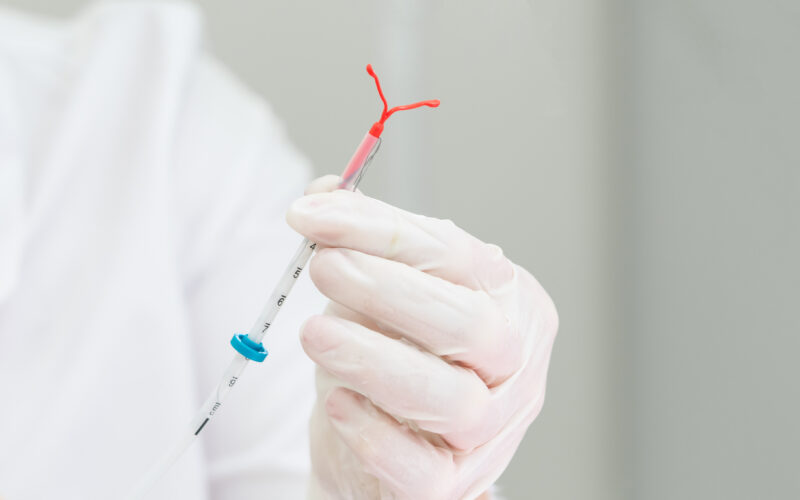Intrauterine devices (IUDs), be they hormonal or copper, are having a moment in the national and international spotlight, and that spotlight isn’t altogether positive. On the one hand, women’s health organizations like the American College of Obstetricians and Gynecologists (ACOG) routinely tout IUDs’ high effectiveness rates of long-term pregnancy prevention, combined with the “easy” reversibility of their sterilizing effects. On the other hand, websites like NW sister site IUDAlert.com have for years cataloged concerning IUD side effects and patient stories with sometimes tragic endings, seeking to provide adequate education so that potential IUD users can give truly informed consent to having the device placed.
Recently, TikTok content on IUD insertion has generated hundreds of millions of views, and sparked significant conversation about IUD insertion pain. And, early in June 2022, research funded by the United States Food and Drug Administration (FDA) suggested that uterine perforation by IUDs, though relatively rare, occurs more often than most women (and likely their medical providers) realize. Furthermore, perforation rates are especially high for postpartum women, both those who are breastfeeding and those who are not [1].
These latest stories piggyback on new research (previously covered by Natural Womanhood) from the University of California at San Francisco, finding that real-world rates of unintended pregnancy after IUD insertion may be much higher than most women are led to believe.
Women deserve to know that IUD insertion pain may be severe
IUD insertion (described here) is usually quick, and may look relatively innocuous in model depictions like this one. But for up to an estimated 15 percent of women, the pain from IUD insertion can be severe, even excruciating [2]. In fact, one IUD user described the discomfort as worse than the pain she felt from cracked ribs after a car accident. Women who have never given birth before appear more likely to report severe pain, according to a 2021 study [3].
Distressingly, in a 2014 study, healthcare providers consistently underestimated patients’ pain during IUD insertion [4]. While some healthcare providers recommend women take over-the-counter pain relievers like Advil or Ibuprofen an hour or so before having an IUD inserted, there’s been little research done on this topic to date, and results haven’t been promising. In fact, in a 2019 systematic review, none of the studied pain relief options provided any benefit except a topical anesthetic cream, which was only moderately effective at reducing insertion-related pain [5].
Occasionally, women may pursue intravenous (IV) sedation for IUD insertion, but anesthesia is costly, unlikely to be covered by insurance, and comes with its own risks.
Study: Risk of uterine perforation by IUDs higher than previously thought, especially for postpartum women
As mentioned above, a study funded by the FDA and published in the June 2022 edition of well-respected, peer-reviewed medical journal The Lancet, found that uterine perforation may be much more common than previously thought [1]. IUD uterine perforation is defined as the puncture of the uterus by some or all of the plastic T-shaped IUD device.
Researchers conducted a retrospective cohort study of the electronic health records of 327,000 women younger than 50 years of age who had an IUD inserted between January 1st, 2001 and April 30th, 2018, at one of three sites in California or the state of Washington. Recognizing that “previous studies with only 12-month follow-ups underestimate the risk,” women were followed for 5 years after insertion.
While a 2016 study reported uterine perforation occurring in just 1 of 1,000 insertions (0.1%), in contrast, The Lancet study found an overall rate of 6 perforations per 1,000 insertions, with substantially higher risk for any postpartum women (up to one year after giving birth) and highest risk amongst postpartum breastfeeding women [6].
Uterine perforation incidence was two times higher (equivalent to roughly 12 in 1,000 insertions) amongst postpartum women who had an IUD inserted on the day of delivery, or up to 3 days postpartum, versus non-postpartum women. And perforation incidence was nearly seven times higher (equivalent to nearly 42 in 1,000 insertions) amongst postpartum women who had an IUD inserted between 4 days and 6 weeks postpartum, compared to non-postpartum women.
Change to Mirena label
According to The Lancet study’s lead author, Dr. Susan Reed (an OB/GYN associated with the University of Washington healthcare system), the results of the FDA study prompted a label change for a popular brand of IUD, the Mirena. A UW Medicine press release read:
“The study led Bayer Pharmaceuticals to make a label update on its Mirena IUD, providing greater precision to the existing language. The packaging instructions alert women to contact their doctor immediately if they experience symptoms associated with uterine perforations. The main symptoms are pain and change in bleeding patterns, Reed said.”
What happens when the uterus (or other internal structure) is perforated by an IUD?
The 2016 study mentioned above sums up the possible impacts of uterine perforation:
“Of the perforations that do occur, most do not cause long-term harm, although women are generally advised to go through a surgical removal procedure that has some risks. However, a significant harm associated with perforation may be the loss of the IUD’s contraceptive effect, resulting in unplanned, and often unwanted, pregnancy. Sometimes a perforation leads to trauma to internal structures; such cases are thought to be very rare” [6].
That last sentence may have you wondering what other “internal structures” can possibly be affected or perforated by a wayward IUD. Perforation by the IUD of the uterus, large intestine, small intestine, rectum, appendix, urinary tract, bladder, or ureter are all possible. And while the IUD’s two strings should hang out of the vagina by about 2 inches, when those strings are not visible, a healthcare provider may incorrectly assume that the IUD has been accidentally expelled (which is more common amongst postpartum women). In fact, the IUD may have moved up, and perforated the uterus or elsewhere. Computed tomography (CT) scans, also known as CAT scans, are necessary to confirm perforation or other migration of the IUD.
Women deserve all the facts about IUDs to give truly informed consent
Women deserve to be educated about the possibility of significant insertion pain as well as the potential for uterine or other internal structure perforation by their IUDs, either during insertion or gradually over time. Postpartum women in particular need to understand their heightened risk of perforation, especially if they are breastfeeding. Women also deserve to know that they have options for family planning, including in the postpartum period, that are effective and do not compromise their physical health.
References:
[1] Reed, Susan D et al. “Intrauterine device-related uterine perforation incidence and risk (APEX-IUD): A large multisite cohort study.” The Lancet, vol. 399, no. 10341 (2022): pp. 2103-2112. https://doi.org/10.1016/S0140-6736(22)00015-0 [2] Gemzell-Danielsson, Kristina et al. “The Effect of Age, Parity and Body Mass Index on the Efficacy, Safety, Placement and User Satisfaction Associated With Two Low-Dose Levonorgestrel Intrauterine Contraceptive Systems: Subgroup Analyses of Data From a Phase III Trial.” PloS one, vol. 10, no. 9 (2015):e0135309. doi:10.1371/journal.pone.0135309 [3] Chaves, Isabella A et al. “Pain scores at the insertion of the 52 MG levonorgestrel-releasing intrauterine system among nulligravidas and parous women.” The European journal of contraception & reproductive health care : the official journal of the European Society of Contraception, vol. 26, no. 5 (2021): pp. 399-403. doi:10.1080/13625187.2021.1925882 [4] Maguire, Karla et al. “Accuracy of providers’ assessment of pain during intrauterine device insertion.” Contraception, vol. 89,no. 1 (2014): pp. 22-4. doi:10.1016/j.contraception.2013.09.008 [5] Samy, Ahmed et al. “Evaluating different pain lowering medications during intrauterine device insertion: a systematic review and network meta-analysis.” Fertility and sterility, vol. 111,no. 3 (2019): pp. 553-561.e4. doi:10.1016/j.fertnstert.2018.11.012 [6] Rowlands, Sam et al. “Intrauterine devices and risk of uterine perforation: current perspectives.” Open access journal of contraception, vol. 7 (2016): pp. 19-32. doi:10.2147/OAJC.S85546Additional Reading:
Why the copper IUD is not the natural birth control you’ve been looking for
Heavy bleeding, anxiety, and other signs your IUD is not good for you







